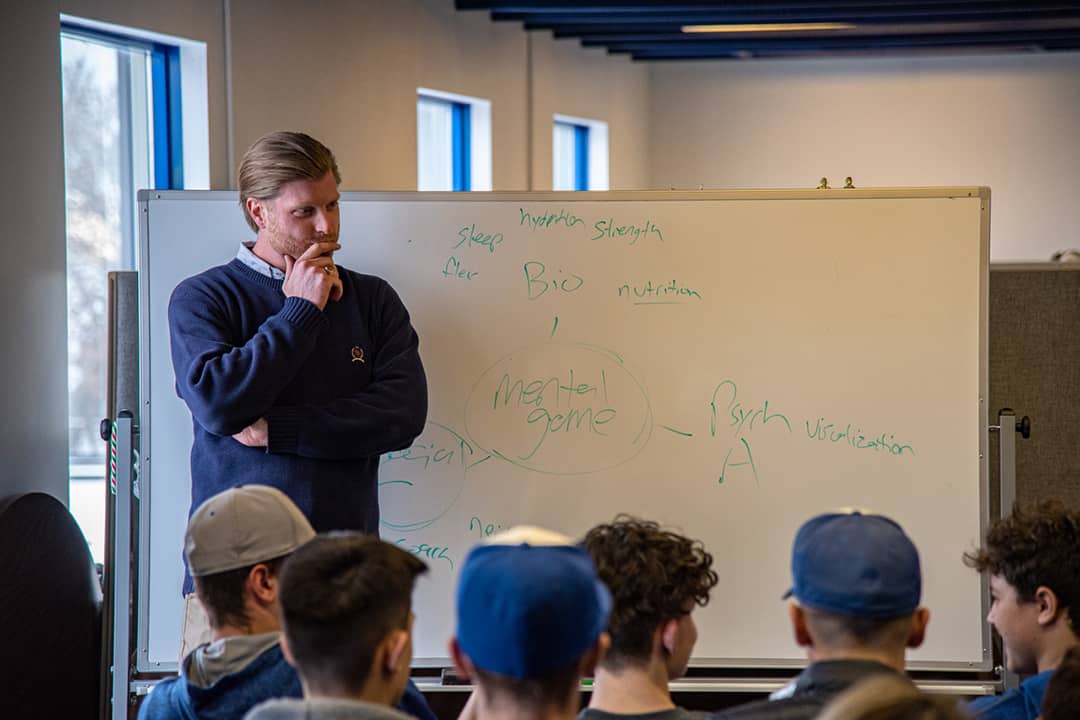Content warning: discussions of suicide
What is the value of addressing social connectedness as a factor of mental health? To Michael Wager, it may be one of the best tools that students can use especially as the university battles a mental health crisis on campus.
Wager, a performance coach for athletes who works at the U of T-affiliated Toronto Western Hospital, spoke with The Varsity to share his experiences of mental health and discuss promising approaches to addressing the causes of mental health concerns.
The ABC model of mental health
An influential model in psychiatry is the biopsychosocial approach, which posits that biological, psychological, and social factors each influence resiliency — defined as one’s ability to adapt to stress and adversity.
To make the model more accessible to a general audience, Wager reframed it as the ABCs model of resiliency: attitude, biology, and community.
Psychological attitude refers to one’s outlook on the world, which includes whether you see the world through a positive lens and have an optimistic attitude. This represents the psychological factors of resilience. “If you can find a way to have a positive attitude, you can be more resilient,” said Wager.
A shift in psychological outlook could stem from psychotherapy, which comprises treatments for mental health conditions by talking with a mental health provider. It could also come from coaching, especially in the context of competitive sports, which could shift athletes’ mindsets.
“The ‘B,’ biology, is how can you hack your own biology to be more resilient,” said Wager. This corresponds to the biological factors of resilience, which suggests that biological abnormalities may be a cause of mental health conditions.
Prescription medication, such as antidepressants, could be a treatment option, along with medical procedures, including deep brain stimulation for severe cases. However, Wager noted that neurological changes can also take place due to physical exercise, as well as improving one’s nutrition by eating healthier food.
But the ‘C,’ community, could be the most important piece of the puzzle of resilience, noted Wager. Which corresponds to the social factors of the biopsychosocial model.
“There’s research out there that shows the more connected one is to their community, the better off they’re going to be in their own mental health journeys,” noted Wager. Joining a club, a sports team, or volunteering could be ways for students to find a community.
One major criticism of the biopsychosocial approach is that the boundaries of biological, psychological, and social factors are ill-defined: for example, it’s unclear whether a psychological factor can be a biological factor as well. However, this may be less important in the context of treatment.
“If you’re not sure where to start, just pick something, anything, that will help you make gains in one of those three areas,” said Wager.
Applying the model in his own life
Wager himself has grappled with mental health challenges and used the ABCs to address them.
“In university, I had a really tough time; I was depressed,” he said. “I failed my first year, got myself back together, worked in the restaurant industry for a couple of years, became a little more stable, and then finished a bachelor’s degree.”
He has further experienced depression following the loss of a friend due to suicide. “It made me more depressed, but it also made me more motivated to really try and make a contribution to this world and [raise awareness about mental health].”
Wager uses journalling to change his own psychology. “I have a great little journal that my friend made me, it’s tiny so I can carry it wherever I go,” he said. “So I will start my day by writing out 10 things I’m grateful for.”
To address his biology, Wager practices yoga, which has been linked to neurobiological changes that could help patients with depression. He has also spoken with a psychiatrist, who has prescribed him with medication to improve his mental health.
Finally, to broaden his community, he joined a volleyball team. “When I first moved here [to Toronto], I barely knew anyone,” he said. The team sport enabled him to have fun and get to know people he enjoyed spending time with.
“It’s so important if you’re going to perform in sports or in school or in life, you’ve got to have people in your corner,” he said, reflecting on the importance of social factors. “Whether you’re an athlete or not, you’ve got to have people in your corner, and that’s what I want to share.”
If you or someone you know is in distress, you can call:
- Canada Suicide Prevention Service phone available 24/7 at 1-833-456-4566
- Good 2 Talk Student Helpline at 1-866-925-5454
- Ontario Mental Health Helpline at 1-866-531-2600
- Gerstein Centre Crisis Line at 416-929-5200
- U of T Health & Wellness Centre at 416-978-8030.
Warning signs of suicide include:
- Talking about wanting to die
- Looking for a way to kill oneself
- Talking about feeling hopeless or having no purpose
- Talking about feeling trapped or being in unbearable pain
- Talking about being a burden to others
- Increasing use of alcohol or drugs
- Acting anxious, agitated, or recklessly
- Sleeping too little or too much
- Withdrawing or feeling isolated
- Showing rage or talking about seeking revenge
- Displaying extreme mood swings
The more of these signs a person shows, the greater the risk. If you suspect someone you know may be contemplating suicide, you should talk to them, according to the Canadian Association for Suicide Prevention.


